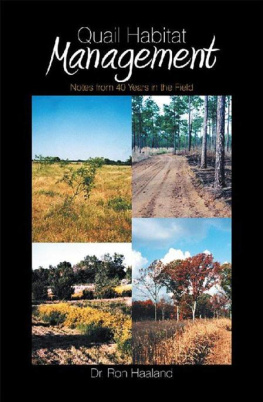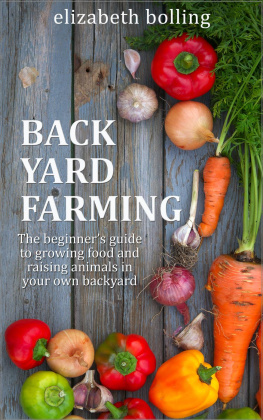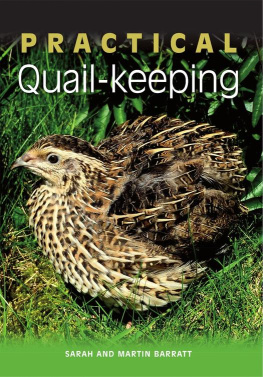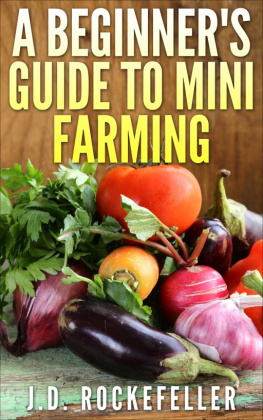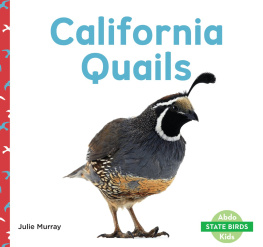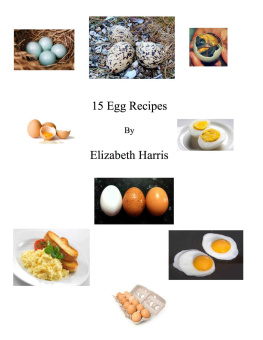QUAIL FARMING, PROJECT FOR BEGINNERS
Easy Guide to Producing Quail Eggs
Mara Ximena Camino
infoodstorage.com
2021. Mara Ximena Camino. FSF Food Storage Foundation. All rights are reserved.
It is illegal to reproduce, copy or broadcast any part of this document in digital or paper format. It is strictly forbidden to register this publication.
Dedicated to Mirta Graciela Torralba
Table of contents
Introduction
Since I was a child, I was connected with nature and countryside, my fascination exceeded my own limitations, since I have always lived in the "big city", an essential obstacle to carry out large-scale farming undertaking.
What can be produced with low investment and in confined spaces? The alternatives are not many, but there are some. One of them, like, for example, an vegetable garden, can be carried out, separating a small plot in the garden or even on the balconies of the apartments with systems such as hydroponics or vertical gardening.
If we are looking for an alternative, but in animal farming, without a doubt, we will find Quail Breeding or Coturniculture as an option.
Readers will connect themselves with the fascinating possibility of raising, caring for and collecting the eggs of these birds, which are easy to maintain and produce. In my years of study and work, I remember with great joy the moment when I took charge of my own Quail Farming small business. I invite all who have acquired this humble guide to discover the strengths (although there are also weaknesses) of this productive system.
This book is about the experimental work of an evaluation of the farming activity of a flock of 240 laying quails and its relationship with the profitability of the project. For this, the general features of these animals, the environmental conditions that influence productivity, the appropriate facilities and the relationship of quail eggs with the needs of the population were studied in depth.
Based on everything that I will be able to show you below, it was concluded that if all the rules are followed, laying quails are birds that exceed production expectations, but the market in Argentina and other countries, of course, which by many reasons, such as cultural or prices, it is not prepared for the large consumption of these eggs, therefore for the profitability of the project to be successful it must be on a large scale to be able to compete with existing cooperatives, which have for example, in the large supermarkets its sales goal.
Main features of quails for egg production
In order to deepen the production of Japanese Quail eggs, which are essentially layers, we will go on to consider the fundamental aspects of these birds.
The quail is a bird belonging to the order of Gallinaceae, family Phasianoidea and species Coturnix coturnix. Their females lay eggs without being in presence by males (except for reproduction), as required for example pheasants, partridges, ostriches etc. that their egg production is limited for that reason. There are a large number of subspecies, the two best known being:
a) the coturnix coturnix coturnix , is the wild quail that nests in Europe and Asia, migrating in winter to Africa, Arabia and India, the Bible cites it as the manna of the Hebrew people.
b) the coturnix coturnix japonica , is the quail native from China that was brought to Japan through Korea in the 11th century.
These two subspecies are the ones that are used for farming purposes, the first for meat production given its greater body weight and the second for egg production since its high productivity stands out. The European wild quail and the domestic or Japanese are differentiated by the song of the male and by the plumage: the plumage color of the male of the domestic quail has a more uniform neck and chin color, there is also a difference between the females that are of Pointed and black-stained feathers in the Japanese while the European have more rounded and pale colored feathers.
The coturnix coturnix japonica was domesticated in Japan during the 12th century using it as a decorative bird until the emperor was apparently cured of tuberculosis thanks to a healing diet based on quail meat and given that situation it was highly valued for consumption. At the end of the 19th century the production of eggs and meat was already common and by 1940 with the imperial expansion it spread throughout Southeast Asia.
The Japanese Quail
They are small, highly precocious birds that reach sexual maturity in a period ranging from 35 to 42 days. The incubation period is 16 days, the quail chicks weighing approximately 10 grams being born from an ovoid-shaped egg 3 centimeters long by 2.5 wide. At eight weeks of their birth, the females weigh 150g and the males 120g, the females are larger than the males and its outstanding features are elongated chest and wide abdomen, which makes them good layers. The head is slender and with great mobility in the neck. The eyes are dark brown and black pupil with thick eyelids and well developed membrane. The beak is strong and powerful, generally yellow or yellowish-green or blackish. The trunk is wide and in males the chest feathers are an intense cinnamon color sometimes combined with black, unlike in females, which is light in color, which distinguishes the sex from an early age. The cloaca (oviduct and rectum) is found in a highly developed rump, on which the tail feathers settle, covered by the primary wing feathers.
The ischial area is wide, the special weld of the pelvic (coxal) bones to the spine and the great dilatation capacity of the pelvis is notable. The anus, perineum and haunches are quite similar to chickens. In the male the rump is prominent and very mobile and below it are located the paragenital glands that are bulging in the active sexual period, deforming the anus. The wings have three long primary rowing feathers, seven secondary feathers and ten or eleven tertiary rowing feathers. We also find the six clearly visible primary coverts that complement the rowing feathers in their function. An additional wing called alula, is highly developed and formed by three main and four secondary feathers, it is this one that produces the characteristic noise during the the flight of the quail. Females have less developed wings than males. The legs are powerful and robust, they have a very wide tibia-tarsal joint and a short metatarsal which makes the bird stay flush with the ground. They have three front toes and one back, without spurs, the limb is covered with horny gussets, the color varies with their feeding, although in males the legs are longer and reddish.
Male sexual characteristics
Testicles
Located in the sublumbar region, below the kidneys. They begin to develop at 30 days and continue to do so until 100 or 130 days if sexual stimulation persists, otherwise they regress. They become hypertrophied in the rut period, leaning on the stomach and liver, which causes loss of appetite, causing deaths or injuries in very active males. They are pink in color and have a hard consistency in the sexual phase.
Gonadal ducts
It is a system of small tubs through which semen reaches the ejaculation bulbs. The ejaculatory bulbs, also called seminal bulbs, represent the reservoir of seminal material.
Genital papilla
It is the copulatory organ of the male genital system made up of two tubular nuclei that end in the ejaculatory bulbs through exceptionally fine ducts.
Paragenital glands
These are two glands of secretory cells located below the top of the cloaca. With a tubular structure, it ends in a large excretory duct, its function is to produce the whitish product that is eliminated during rut. The secretion is eliminated before and after intercourse and its purpose is to occlude the oviduct to prevent leakage of semen. Nubility (age at which you quails have the ability to maintain sexual contact) begins between 25 and 30 days. The male begins to fight and sing at 42 or 50 days. Singing is very important because it is related to the aeration of the testicles and the production of fertile semen. Quails are polygamous birds.


